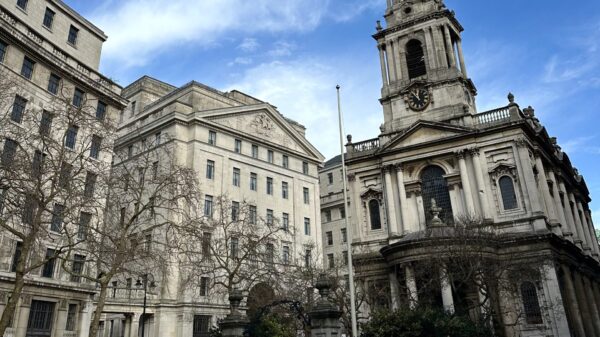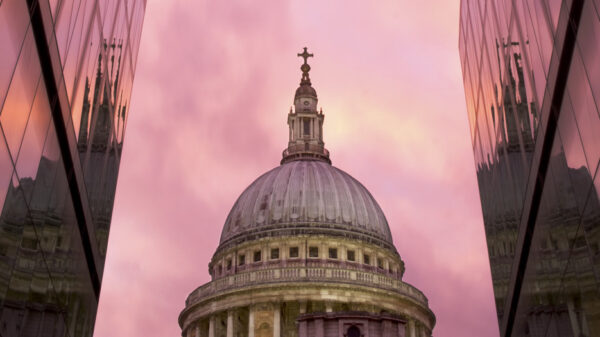Staff writer Connor Williams asks if the art vandalism of Just Stop Oil is an effective way to push for change.
“What is worth more, art or life?”
These are the words shouted in the halls of London’s National Gallery on the October 14 by Just Stop Oil climate activist Phoebe Plummer. The question asked by the 21-year-old came just after throwing a can of soup at the Van Gogh masterpiece Sunflowers. To me, a first-year philosophy student, life is all we have to create art with, so let’s not ruin it.
Activists with @JustStop_Oil have thrown tomato soup on Van Gogh’s Sunflowers at the national Gallery and glued themselves to the wall. pic.twitter.com/M8YP1LPTOU
— Damien Gayle (@damiengayle) October 14, 2022
Climate groups like Just Stop Oil have been committing acts of vandalism all around Europe this year. Masterpieces like Botticelli’s Primavera, Da Vinci’s Mona Lisa, and most recently two Goya paintings, have all been targeted in the name of climate activism. My concern is that while these events are creating noise about climate change, they may be more of a hindrance than a help.
Who are Just Stop Oil?
The Organisation is a climate activism group that has emerged out of Extinction Rebellion and Insulate Britain. Their brand of civil disobedience has also included blocking the M25 and spray painting Harrods in a signature bright orange. The group is predominantly funded by the Climate Emergency Fund, a US based organisation that receives backing from Aileen Getty, granddaughter of J Paul Getty, the founder of the Getty Oil empire.
What do they want?
As the name suggests, the organisation is aiming to persuade the government to cancel plans to licence c.100 oil and gas schemes. But unlike other climate protest groups, Just Stop Oil is far more specific in its demands. The protests seem to have moved beyond aiming to build awareness and have become focused on practical action. This seems to be a somewhat positive progression – at least everyone knows about climate change, now it is time for more precise and accountable action.
Here’s why destroying art won’t help their cause
As seen in the clip above Just Stop Oil has used the famous Van Gogh painting Sunflowers to bring about attention to their cause and to themselves. This brings to mind the age-old PR slogan that there is ‘no such thing as bad press’; the idea that any limelight is better than none. A notion in need of re-evaluation. Being loud is not always the same as being effective.
If Just Stop Oil aims to make the government change its policies, throwing soup and making spectacles is not the type of pressure that the government is likely to respond to. Labour Leader Keir Starmer has already said that Just Stop Oil activists are “wrong and arrogant”. It seems that when Just Stop Oil is adding hyperbole and tension to an already divisive issue. I understand that civil disobedience has proven to be a useful method of protest in the past, but symbolically destroying art only creates drama and flashy headlines rather than a rally for change.
Their view is that art vandalism and other drastic acts of protest can be very successful in raising awareness because they force the media to provide organisations with a platform. It cannot be denied that defacing a painting or throwing cake at King Charles’ wax figurine is attention-grabbing. While it may be true that Just Stop Oil has a larger platform than ever, it is difficult to see how Just Stop Oil will turn public and government resentment in their favour.
A symbolic problem
It is undeniable that protesting climate change is an honourable cause and one that deserves recognition, so when making a statement why not throw soup on something that actually has something to do with fossil fuels? Granted Van Gogh may have painted with oil, but we can safely assume that his medium was not a call to support drilling in the North Sea. If Van Gogh had been instrumental in the decline of climate health, then I get it, feel free to throw that soup. But it is simply not the case. Symbolism matters and targeting an innocent painting is not helpful especially when there are so many other forms of protest that are more effective.
Just Stop Oil has also released a statement stating that “Sunflowers was never in any danger,” which despite minor impairments to the frame, is true. However, does this not just highlight the irrelevance of the painting to the action? Sunflowers was a passive player in an act that could have been far more symbolic if done elsewhere.
Is destroying art ever positive?
It would be wrong of me to argue that protesting using art is never ineffective. Sometimes defaming or destroying art can be a pivotal moment in expressing the shifting of a societal perspective. Take the statue of the 17th century MP and slave trader Edward Colston in Bristol; a piece that was torn down by several activists during a protest. The destruction of this piece of art was a symbolic act that forced Brits to further recognise that it was not right to have symbols that glorified beneficiaries of the slave trade. While the way in which the structure was brought down caused some controversy, it cannot be denied that the destruction of art in this context was an effective piece of protest. The piece of artwork was directly related to the cause.
But there is a clear difference between the prior example and the vandalism being carried out on unproblematic masterpieces. It differs because the reasoning used to justify destroying these types of pieces just makes no sense. The message being sent out by climate groups like Just Stop Oil or Letzte Generation (the group that smeared potatoes on Monet’s Meules) seems to be, ‘if paintings covered in food annoys you, well you should check out climate change.’ This is not a logical way of protesting; it is a damaging one. If this type of protest is to continue, it will also harm the message Just Stop Oil is committed to because of a cliché trap. If targeting art becomes common practice amongst activists, its effect will be numbing, and artwork may be at further risk.
As the climate crisis inches closer to an existential tipping point, activism will emerge from new angles and extremes. This will be both a blessing and a curse in the times to come. Pushing for change change is a difficult road to travel and informing people how to get there is just one of the challenges we face without alienating them. We have to paint the right picture to create the right change. My inclination is that this cannot be done by destroying the art we love.
















